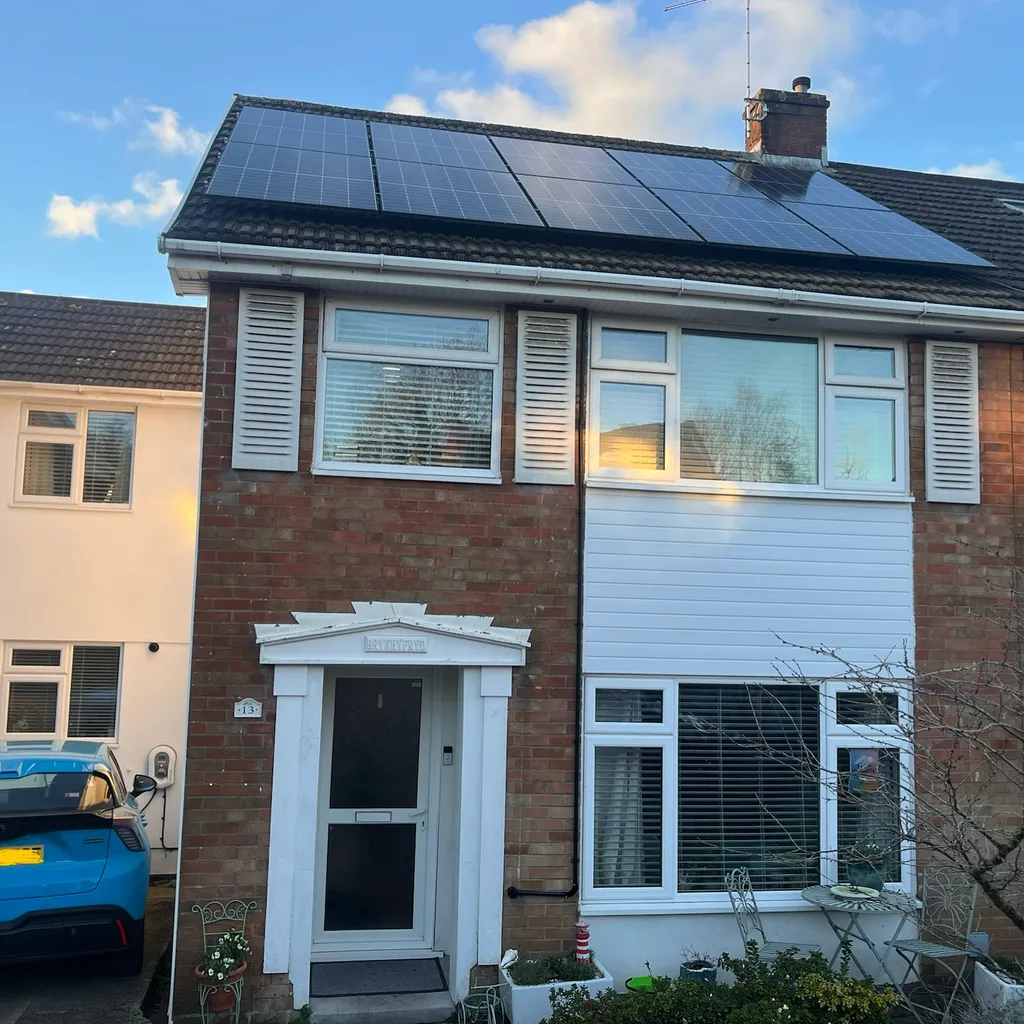Cardiff homeowner Torrin Stafford took the energy performance certificate (EPC) rating of his family home from a D to a B by retrofitting it with green energy measures which have slashed his annual gas and electricity bills by 70%.
Torrin, a senior product manager at Lloyds, added double glazing, LED lightbulbs, loft insulation, and solar panels to his four-bedroom semi-detached family home, and also swapped his diesel car for an electric vehicle to cut down on fuel bills.

'I installed solar panels to start with, from which I sell my excess electricity back to the National Grid. I then installed a home battery to store the energy my solar panels generate,' he explains. 'I also intend to make the most of the Government grant of up to £7,500 for heat pump installation, which means I’ll be able to stop paying for gas.'
Although some of the work was carried out by MCS-certified professional tradespeople, he did as much as possible by himself, including installing his own loft insulation.
Torrin says that learning more about environmental issues inspired his decision to undertake the ambitious retrofit. 'I want to do my bit to make the future greener for my children by burning less fossil fuels,' he says. 'I never used to think about my home’s energy outside of paying the bills, but the research helped me to understand the importance of energy efficiency and how some of the green technologies could improve my energy usage and save both emissions and money.'
'Going greener has made a huge difference to my energy bills. Heating my home and driving a diesel car used to cost around £4,660 per year and it now costs about £1,335. It’s a saving of £3,325 per year which makes a huge difference to my wallet. My aim is to one day have close to zero energy bills.'
If you're interested in improving the green credentials of your property without moving house or building an eco-friendly home from scratch, here are six energy-efficient retrofit ideas that could really make a difference, courtesy of Andrew Asaam, Homes Director at Lloyds Banking Group.
Six ways to improve your home's energy-efficiency
Check your home’s Energy Performance Certificate (EPC): This is a great place to start improving your home’s energy consumption – finding out what your home’s energy rating is now compared to what it could be with some changes. EPCs are valid for 10 years after you purchase a property – but if you don’t have one or if your rating is more than five years old, you can pay for a new one via your bank or another provider.
Decide if you want to DIY or hire a professional: If you’re confident with DIY and want to save some extra money, there are a number of tutorials available online, for making adaptations to your home. Otherwise, websites like Check A Trade offer access to a huge range of local and skilled tradespeople who can help you tackle your home improvements.
It’s also worth contacting your bank to explore any partnerships they may have with relevant suppliers. For instance, at Lloyds Banking Group, we have partnerships in place with Octopus Energy and Effective Home to support consumers with heat pump and solar panel installation.
Think about the low and no-cost options: There are a number of quick and affordable ways to cut back on your energy usage if you’re just starting out or aren’t able to spend on bigger home improvements.
For example, you could be unknowingly adding more than you need to your energy bills every time you make a cup of tea or switch on a light. Replacing everyday appliances with more energy efficient versions, such as LED bulbs or eco kettles, is a simple and affordable way of making your home a little greener and saving money if you’re unsure where to start.
Many of us will also leave our TVs, phone chargers and other household items plugged in even when we’re not using them. While it’s easy to forget to unplug and switch off, all of these devices are still draining electricity even when they’re on standby mode. Using a timer, smart plug or remembering to turn electrical appliances off at the wall can save up to £60 a year according to the Energy Saving Trust.
Consider updating your home’s insulation: Poorly-insulated walls and roofs can lead to a huge amount of heat escaping, contributing to mounting energy bills in the colder months. Installing cavity or solid wall insulation – essentially filling the gaps between or thickening the outside of the walls of your home – can help keep lock in the heat and protect against draughts, as can lining the walls in your loft if you have one. For a more affordable, simple changes, measures such as placing draught excluders by your doors or blocking chimneys can make a big difference.
Invest in double glazing: Double (or even triple) glazing your windows is an instant way of making sure warmth stays in your home, meaning you won’t need to rely on the central heating as much. While it is certainly an investment – around £325 per window according to the Energy Saving Trust – it can save almost £100 per year on your energy bills once they’re fitted, paying off the initial investment in no time.
See whether you’re eligible for any government support: Following the recent rise in energy prices, the UK government has introduced a range of support measures designed to help tackle fuel poverty, saving on energy bills and reducing carbon emissions. If you are on a lower income threshold or receiving any other benefits, you may be eligible to receive some help with making your home more energy efficient. Get in touch with any obligated energy supplier to find out more, even if they’re not your current provider.
